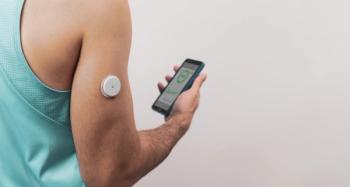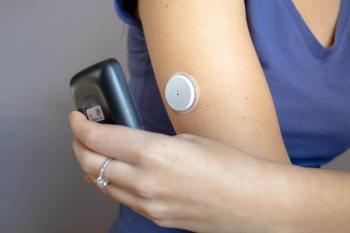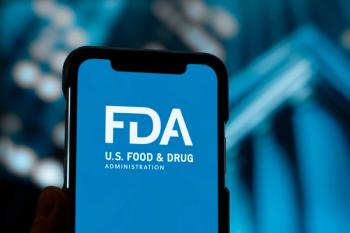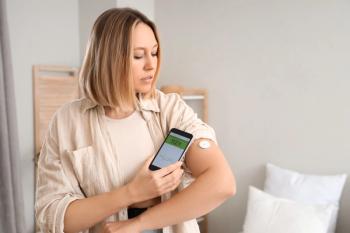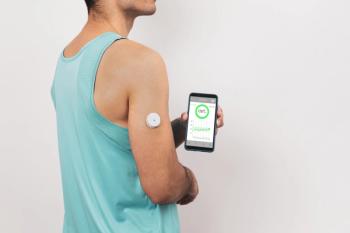
CGM Use May Lead to Behavioral Modifications in Adolescent T2D
Adolescents with type 2 diabetes (T2D) may demonstrate positive behavioral changes around insulin administration and blood glucose monitoring associated with continuous glucose monitoring (CGM), according to research published in Frontiers in Endocrinology.1
Previous studies have demonstrated the role of continuous glucose monitoring in pediatric patients with T1D and adults with T2D; therefore, investigators noted, “there is reason to believe that CGM could play a pivotal role” for pediatric patients with T2D, including checking blood sugar more frequently and promoting behavioral modifications that lead to improved glycemic control. However, there is limited information available around the use of CGM in this setting. Researchers conducted a prospective, interventional, single-group, pilot study to determine if a complementary 10-day trial of CGM use in this patient population improves T2D outcomes.
The current study was conducted at 2 sites within the Johns Hopkins Pediatric Diabetes Center in Baltimore, Maryland. Patients aged 8 to 21 years who were diagnosed with T2D for 3 or more months and had not used CGM in the past 12 months were eligible to participate. Participants used the Dexcom G6 and Dexcom clarity apps. They consulted with a diabetes educator, who provided CGM education such as target blood sugar range (70-180 mg/dL), use of trend arrows, intervention for alerts, and education around the Dexcom app.
The primary study outcomes were change in time in range of the first 5 days compared with the second 5 days, as well as changes in HbA1c level from baselines to 3- to 6-month follow-up. Secondary outcomes included behavioral modifications as assessed during 5- and 10-day follow-up calls.
The study cohort included 41 patients between ages 11 and 18 years (median age, 16.2 years; 61% girls, 81% non-Hispanic Black; median diabetes duration, 0.8 years). Median HbA1c was 10.3% and median BMI was 37.3 kg/m2. Most participants (76%) had public insurance and a household income of less than $50,000. Forty of the participants were on insulin prior to the study start, with the remaining patient scheduled to start insulin during the enrollment visit. Eighty-five percent were using basal/bolus insulin, 80.5% were using metformin, and 4.9% were taking liraglutide. Notably, eleven participants required a loaner compatible smart phone in order to use the CGM device.
Thirty participants completed 3- or 6-month follow up. Within this group, mean baseline HbA1c was 10.2%; at 3 months, this value was 10.3%. Among the 19 participants who completed at least 8 days of the 10-day trial, the average 5-day time in range was 49.2%; average 10-day time in range was 50.7%, and average 5- and 10-day glucose readings were 213 mg/dL and 212 mg/dL, respectively. Two of the study participants presented to the clinic in diabetic ketoacidosis, with an HbA1c higher than 14% within 1 month of the trial, and 1 participant developed a skin infection at the insertion site.
At both 5- and 10-day follow-up calls, patients responded to questions from the diabetes educator about CGM use. Most participants reported positive behavioral changes, including administering insulin more often, checking blood glucose more often, avoiding high sugar foods, and exercising more. Insulin dose changes were made by the diabetes provder based on data provided during follow-up calls.
Overall, 95.8% of participants reported increased blood glucose checks, 58.3% reported more insulin usage, and 54.2% had insulin doses adjusted after 10 days of CGM use; at the conclusion of the follow-up period, 96% of participants felt that the CGM improved their diabetes management.
Study limitations include the small sample size and limited number of participants who completed both the 10-day trial and 3- and 6-month follow up visits; the large number of participants who experienced connectivity issues; and the high number of patients lost to follow-up.
“Although 10-day trial CGM use did not impact short-term or long-term glycemic control in this sample of youth with T2D, most participants reported positive behavioral changes,” the researchers concluded. “Of those who completed the full 10 days of CGM use, most wanted to continue using CGM.”
Future studies with larger patient cohorts and longer periods of CGM use “may help clarify the potential impact of CGM in youth with T2D.”
Reference
1. Manfredo J, Lin T, Gupta R, et al. Short-term use of CGM in youth onset type 2 diabetes is associated with behavioral modifications. Front Endocrinol. 2023;14:1182260. doi:10.3389/fendo.2021.1182260
Newsletter
Pharmacy practice is always changing. Stay ahead of the curve with the Drug Topics newsletter and get the latest drug information, industry trends, and patient care tips.

